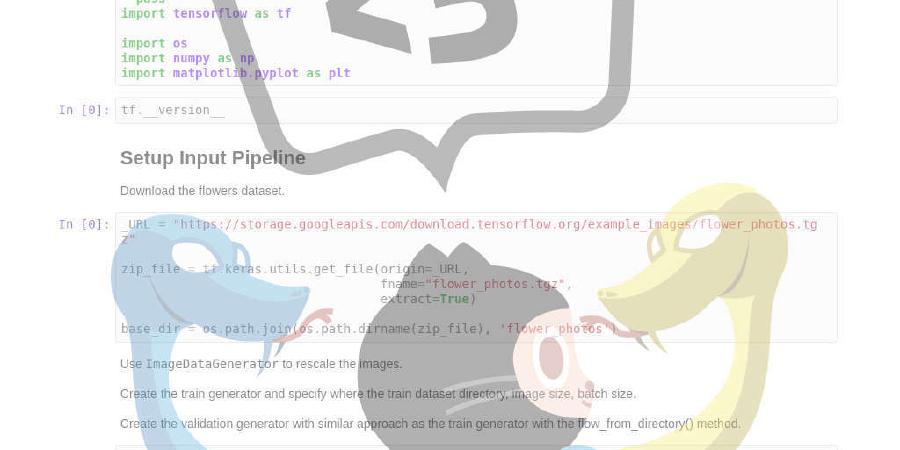plaidml/plaidml

PlaidML is a framework for making deep learning work everywhere.
| repo name | plaidml/plaidml |
| repo link | https://github.com/plaidml/plaidml |
| homepage | https://ai.intel.com/plaidml |
| language | C++ |
| size (curr.) | 71719 kB |
| stars (curr.) | 3208 |
| created | 2017-08-15 |
| license | Apache License 2.0 |
A platform for making deep learning work everywhere.
Documentation | Installation Instructions | Building PlaidML | Contributing | Troubleshooting | Reporting Issues
To Our Users
First off, we’d like to thank you for choosing PlaidML. Whether you’re a new user or a multi-year veteran, we greatly appreciate you for the time you’ve spent tinkering around with our source code, sending us feedback, and improving our codebase. PlaidML would truly not be the same without you.
The feedback we have received from our users indicates an ever-increasing need for performance, programmability, and portability. During the past few months, we have been restructuring PlaidML to address those needs. Below is a summary of the biggest changes:
- We’ve adopted MLIR, an extensible compiler infrastructure that has gained industry-wide adoption since its release in early 2019. MLIR makes it easier to integrate new software and hardware into our compiler stack, as well as making it easier to write optimizations for our compiler.
- We’ve worked extensively on Stripe, our low-level intermediate representation within PlaidML. Stripe contains optimizations that greatly improve the performance of our compiler. While our work on Stripe began before we decided to use MLIR, we are in the process of fully integrating Stripe into MLIR.
- We created our C++/Python embedded domain-specific language (EDSL) to improve the programmability of PlaidML.
Today, we’re announcing a new branch of PlaidML — plaidml-v1. This will act as
our development branch going forward and will allow us to more rapidly prototype
the changes we’re making without breaking our existing user base. As a
precaution, please note that certain features, tests, and hardware targets may
be broken in plaidml-v1.
You can continue to use code on the master branch or from our releases on
PyPI. For your convenience, the contents of our master branch will be released
as version 0.7.0. We are keeping the master branch of PlaidML stable and
maintaining it until plaidml-v1 is ready for production.
If you’d like to try out some of PlaidML’s newer performance improvements, you
can try running PlaidML with the environment variable PLAIDML_USE_STRIPE=1.
This will act as a precursor to the changes you’ll be seeing in plaidml-v1,
and we’re excited to hear your feedback on Stripe.
Your support means a lot to us. Thank you for being understanding of our new development process during this new and exciting time for deep learning compilers.
PlaidML is an advanced and portable tensor compiler for enabling deep learning on laptops, embedded devices, or other devices where the available computing hardware is not well supported or the available software stack contains unpalatable license restrictions.
PlaidML sits underneath common machine learning frameworks, enabling users to access any hardware supported by PlaidML. PlaidML supports Keras, ONNX, and nGraph.
As a component within the nGraph Compiler stack, PlaidML further extends the capabilities of specialized deep-learning hardware (especially GPUs,) and makes it both easier and faster to access or make use of subgraph-level optimizations that would otherwise be bounded by the compute limitations of the device.
As a component under Keras, PlaidML can accelerate training workloads with customized or automatically-generated Tile code. It works especially well on GPUs, and it doesn’t require use of CUDA/cuDNN on Nvidia hardware, while achieving comparable performance.
PlaidML works on all major operating systems: Linux, macOS, and Windows.
If you are using a hardware target not supported by PlaidML by default, such as Clover, check out the instructions at building PlaidML to build a custom configuration to support your hardware.
Prerequisites
- Python (v2 supported, v3 recommended)
- OpenCL 1.2 or greater
Quick Start
See the troubleshooting section for solutions to common issues.
virtualenv plaidml
source plaidml/bin/activate
pip install plaidml-keras plaidbench
Choose which accelerator you’d like to use (many computers, especially laptops, have multiple):
plaidml-setup
Next, try benchmarking MobileNet inference performance:
plaidbench keras mobilenet
Or, try training MobileNet:
plaidbench --batch-size 16 keras --train mobilenet
Installation Instructions
We support a variety of operating systems and installation methods.
Demos and Related Projects
Plaidbench
Plaidbench is a performance testing suite designed to help users compare the performance of different cards and different frameworks.
Hello VGG
One of the great things about Keras is how easy it is to play with state of the art networks. Here’s all the code you need to run VGG-19:
#!/usr/bin/env python
import numpy as np
import os
import time
os.environ["KERAS_BACKEND"] = "plaidml.keras.backend"
import keras
import keras.applications as kapp
from keras.datasets import cifar10
(x_train, y_train_cats), (x_test, y_test_cats) = cifar10.load_data()
batch_size = 8
x_train = x_train[:batch_size]
x_train = np.repeat(np.repeat(x_train, 7, axis=1), 7, axis=2)
model = kapp.VGG19()
model.compile(optimizer='sgd', loss='categorical_crossentropy',
metrics=['accuracy'])
print("Running initial batch (compiling tile program)")
y = model.predict(x=x_train, batch_size=batch_size)
# Now start the clock and run 10 batches
print("Timing inference...")
start = time.time()
for i in range(10):
y = model.predict(x=x_train, batch_size=batch_size)
print("Ran in {} seconds".format(time.time() - start))
Reporting Issues
Either open a ticket on GitHub or join our slack channel (#plaidml).
CI & Validation
Validated Hardware
A comprehensive set of tests for each release are run against the hardware targets listed below.
-
AMD
- R9 Nano
- RX 480
- Vega 10
-
Intel
- HD4000
- HD Graphics 505
-
NVIDIA
- K80
- GT 640M
- GTX 1050
- GTX 1070
Validated Networks
We support all of the Keras application networks from current versions of 2.x. Validated networks are tested for performance and correctness as part of our continuous integration system.
-
CNNs
- Inception v3
- ResNet50
- VGG19
- Xception
- MobileNet
- DenseNet
- ShuffleNet
-
LSTM
- examples/imdb_lstm.py (from keras)




